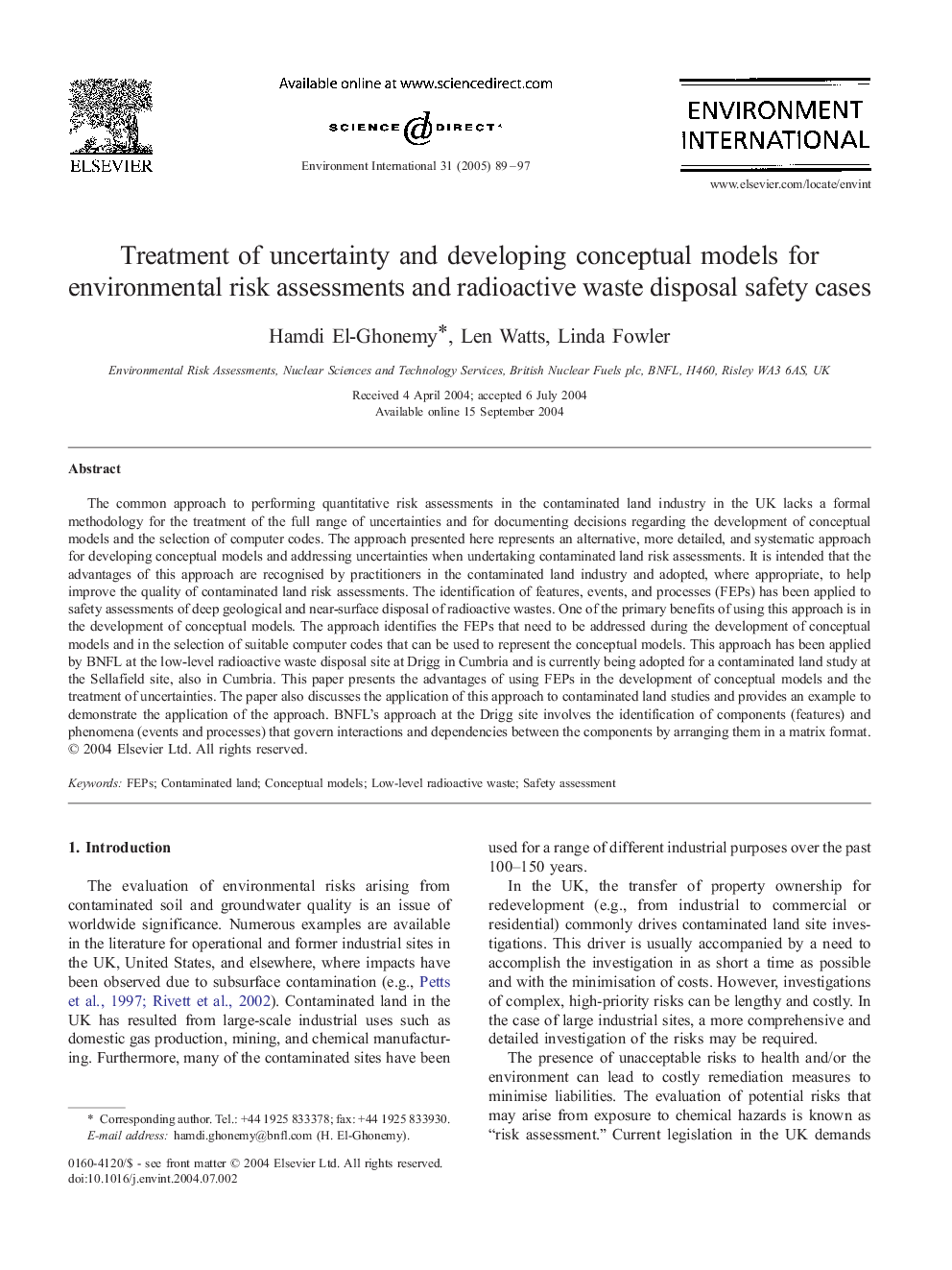| Article ID | Journal | Published Year | Pages | File Type |
|---|---|---|---|---|
| 9455681 | Environment International | 2005 | 9 Pages |
Abstract
The common approach to performing quantitative risk assessments in the contaminated land industry in the UK lacks a formal methodology for the treatment of the full range of uncertainties and for documenting decisions regarding the development of conceptual models and the selection of computer codes. The approach presented here represents an alternative, more detailed, and systematic approach for developing conceptual models and addressing uncertainties when undertaking contaminated land risk assessments. It is intended that the advantages of this approach are recognised by practitioners in the contaminated land industry and adopted, where appropriate, to help improve the quality of contaminated land risk assessments. The identification of features, events, and processes (FEPs) has been applied to safety assessments of deep geological and near-surface disposal of radioactive wastes. One of the primary benefits of using this approach is in the development of conceptual models. The approach identifies the FEPs that need to be addressed during the development of conceptual models and in the selection of suitable computer codes that can be used to represent the conceptual models. This approach has been applied by BNFL at the low-level radioactive waste disposal site at Drigg in Cumbria and is currently being adopted for a contaminated land study at the Sellafield site, also in Cumbria. This paper presents the advantages of using FEPs in the development of conceptual models and the treatment of uncertainties. The paper also discusses the application of this approach to contaminated land studies and provides an example to demonstrate the application of the approach. BNFL's approach at the Drigg site involves the identification of components (features) and phenomena (events and processes) that govern interactions and dependencies between the components by arranging them in a matrix format.
Related Topics
Life Sciences
Environmental Science
Environmental Chemistry
Authors
Hamdi El-Ghonemy, Len Watts, Linda Fowler,
